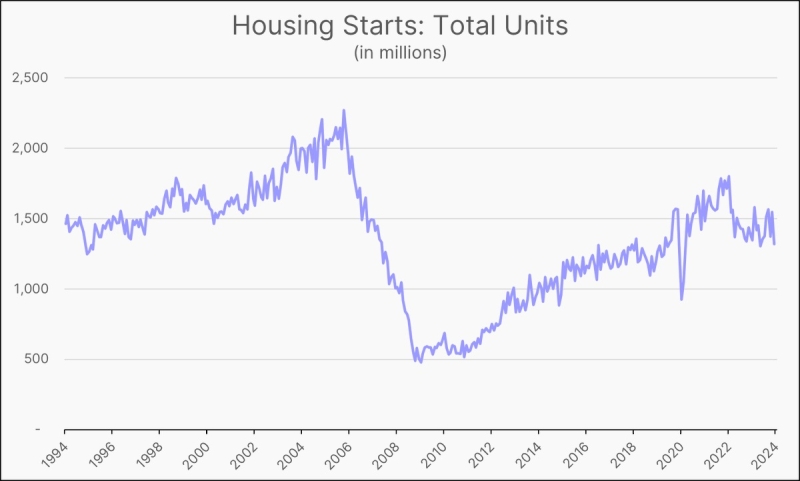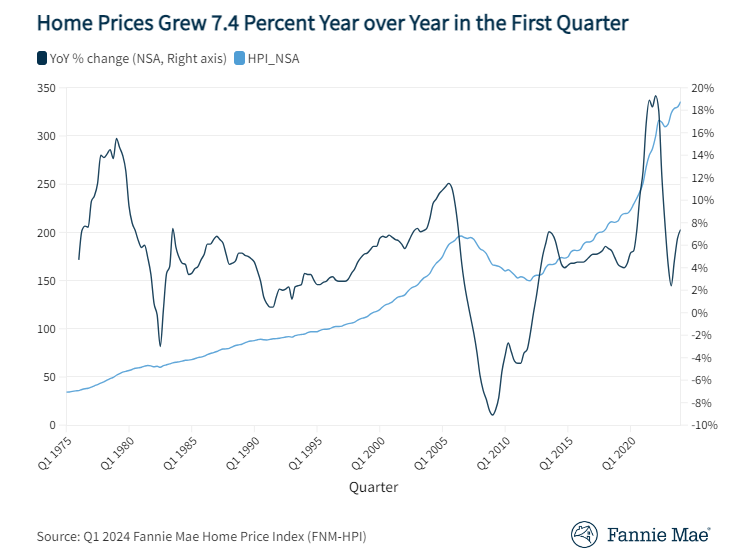Tomorrow's Mortgage Space (Part II)

In this second of our three-part series on the industry’s future, we look at underlying concerns related to two hot-button issues that continue to bedevil the mortgage world: servicing and technology.
One of the sore spots within the mortgage world continues to be the question of how servicers handle their duties. In February, Consumer Financial Protection Bureau (CFPB) Deputy Director Steven Antonakes created a shock with a speech before the Mortgage Bankers Association’s annual servicing conference, in which he harshly berated servicers for the quality of their work.
“We mean to end a failed process in which too many struggling homeowners have been kept in the dark about where they stand,” Antonakes said in his speech. “American consumers deserve better; they are entitled to be treated with respect, dignity, and fairness.”
Antonakes raised further hackles by implying servicers have continued to do a shoddy job, despite new guidelines put forth by the CFPB, and he compared the servicing space to a classic Bill Murray comedy film about the endless repetition of a nightmarish day.
“What we are requiring of servicers are the kind of basic practices of customer service that should have been implemented long ago,” he continued. “We have said that in the early months we will look to see that those subject to the rules have made a good faith effort to comply. A good faith effort, however, does not mean servicers have the freedom to harm consumers. It has felt like Groundhog Day with mortgage servicing for far too long.”
 Oddly, two months after Antonakes’ speech, the CFPB released data that seemed to contradict its deputy director’s assertions of servicers doing a crummy job. In its Consumer Response Annual Report released in April, the CFPB admitted that only 37 percent of the 163,700 complaints it received last year were related to mortgage issues, with the majority of complaints going to other financial services products and services. Of the approximately 59,000 complaints leveled against mortgage companies by those filing an inquiry with the CFPB, 85 percent of the complaints were related to servicing issues—modifications, collections, escrow accounts. But 77 percent of these complaints were dismissed by the agency as being without merit; only two percent of the total mortgage-related complaints resulted in the consumer receiving monetary compensation.
Oddly, two months after Antonakes’ speech, the CFPB released data that seemed to contradict its deputy director’s assertions of servicers doing a crummy job. In its Consumer Response Annual Report released in April, the CFPB admitted that only 37 percent of the 163,700 complaints it received last year were related to mortgage issues, with the majority of complaints going to other financial services products and services. Of the approximately 59,000 complaints leveled against mortgage companies by those filing an inquiry with the CFPB, 85 percent of the complaints were related to servicing issues—modifications, collections, escrow accounts. But 77 percent of these complaints were dismissed by the agency as being without merit; only two percent of the total mortgage-related complaints resulted in the consumer receiving monetary compensation.
Furthermore, data from HOPE NOW, a private sector alliance of mortgage servicers, investors, mortgage insurers and nonprofit counselors, detailed strenuous efforts by the industry to assist at-risk homeowners. During the second quarter of this year, HOPE NOW found that approximately 421,000 homeowners received non-foreclosure solutions from mortgage servicers, while permanent loan modifications totaled approximately 116,000 and short sales totaled 33,000. In comparison, foreclosure sales totaled approximately 115,000 for the quarter, representing the lowest quarterly total since HOPE NOW began tracking data in 2007.
“Since 2007, our members have offered over 20 million mortgage solutions, including more than seven million permanent loan modifications,” said Eric Selk, HOPE NOW’s executive director. “HOPE NOW continues to engage all stakeholders on a daily basis and our data reflects these efforts.
Additionally, HOPE NOW members will continue to work with leaders and government agencies on a local level so that special attention can be given to the various markets around the country that still have the biggest housing related issues.”
 However, data does not entirely erase negative perceptions, and one key area where the mortgage industry has received its share of poor publicity in the servicing of home loans for active duty military personnel. George FitzGerald, senior vice president of the product management, servicing and default technologies division at Jacksonville, Fla.-based Black Knight Financial Services (BKFS), expressed concern that 2015 will not see a return to problems related to the Servicemembers Civil Relief Act.
However, data does not entirely erase negative perceptions, and one key area where the mortgage industry has received its share of poor publicity in the servicing of home loans for active duty military personnel. George FitzGerald, senior vice president of the product management, servicing and default technologies division at Jacksonville, Fla.-based Black Knight Financial Services (BKFS), expressed concern that 2015 will not see a return to problems related to the Servicemembers Civil Relief Act.
“The industry cannot falter, especially with somebody who is off on active duty protecting the country,” he said. “I think the industry is much more cognizant of servicemembers’ needs. However, it has to remain in focus, because you can’t make a mistake in that area.”
There is also the challenge of what happens when residential properties regain their equity after being underwater. Richard Zahm, president of San Francisco-based Primarq, warned that the return of positive equity needs to be mirrored with a new maturity in comprehending the value of this equity.
“Equity lifts the economy,” he said. “But aside from the feel-good benefits, increased value has to be monetized and then either invested or used for consumption. Paper wealth has to be converted. When prices rose in the early 2000s, homeowners tapped into their equity using HELOCs and other debt vehicles. This stimulated the economy—and we're still suffering from this. These vehicles are coming back, which could create a new over-leveraged situation: We're early in the cycle. There's also the problem of many of the "underequitized" continuing to be "underqualified" to refinance their homes given current lender sentiment and QM conditions.”
 Going forward, there is little evidence to support the notion that servicers will slack off or worse into 2015.
Going forward, there is little evidence to support the notion that servicers will slack off or worse into 2015.
“I am consistently seeing an increase in the emphasis on improving the customer experience,” observed Barry Hayes, co-founder and SVP of TeleVoice, headquartered in Houston. “Some of that comes from outside focus on servicers, like the CFPB, but some is a result of healthy introspection, with the servicers saying, ‘Hey, we can and should improve the quality of the customer experience.’ It is very, very encouraging, and it will yield some very good results.”
Running alongside this issue is the question of subservicing. Annemaria Allen, president and CEO of The Compliance Group Inc., headquartered in Carlsbad, Calif., noted that the new compliance regimen that the mortgage industry is working under runs the risk of creating problems for subservicing operations.
“The challenge is to make sure we handle all payment accurately with the borrowers,” she said. “This is becoming a bigger issue for subservicers. These subservicers are servicing for thousands and thousands of lenders, and they’re getting hit for every question on all of the documentation. They have limited resources to keep up with all of these requests.”
On the origination side, Jonathan Corr, president and chief operating officer at Ellie Mae in Pleasanton, Calif., believed that a personnel-based answer to limited resources is not the proper course of action.
“Compliance and quality demands have driven the costs of getting loans done from about $3,500 in 2009 to over $8,000 in the first quarter of this year,” he said. “That’s a huge jump, Most of that is people throwing bodies at the challenge—more underwriters and more processing and compliance folks. They are fearful of buybacks and fines. But it’s human spackle to fill in all of the holes, and that’s very expense. The only way to do this is to embrace automation. Ultimately, everything should be electronically. We will continue to see that trend in 2015. If not, the cost will go even higher.”
“The more and better data you have, the better decisions you make,” stated Paul Zoukis, CEO of Vienna, Va.-based Vantage Production. “The industry needs to have an investment in technology to make this more effective and efficient. That’s Business 101.”
Mat Ishbia, president and CEO of Troy, Mich.-based United Shore Financial Services (USFS), viewed the push for technology-based solutions in Darwinian terms.
“Technology is taking over our industry,” he said. “A lot of people and companies stick with the old processes and systems, and are not using technology the way other industries are. Some people think if they stick with old school thinking, that stuff works. But by using technology, having an app, having access to visible information on the transaction in real-time allows you to differentiate yourself. If you don’t and everyone else is doing it, then you’ll be a dinosaur.”
Ishbia added that his company is “spending lot of money and time to make it easy as possible to originate loans and submit to the lender. The if-it-ain’t-broke-don’t-fix-it mentality created problems for the industry. We’re so busy in the mortgage business that we can’t think about the future. We have to make sure we stay one step ahead.”
 Mark Greco, president of Austin-based 360 Mortgage Group LLC, concurred, although he noted that the mortgage space as well as the wider financial services industry has traditionally been pokey when it comes to embracing new high-tech answers.
Mark Greco, president of Austin-based 360 Mortgage Group LLC, concurred, although he noted that the mortgage space as well as the wider financial services industry has traditionally been pokey when it comes to embracing new high-tech answers.
“This is going to be crucial,” he said. “The industry has always been archaic when it comes to technology. But going forward, we’re going to have to do more with less.”
One digital area where the industry is catching up involves mobile technology.
“Every industry is now feeling the effects of the public's appetite for mobile,” said Eric Robichaud, CEO of Woonsocket, R.I.-based 401 Consulting. “It is now ‘how we do things.’ We see anywhere from 40 percent to 72 percent of Web visits originating from mobile these days, depending upon the type of site. Homebuyers are searching the likes of Zillow and Trulia from their phones when they are out and about, visiting open houses, and pulling up info on mortgage rates and brokers on the spot. Not having a mobile-optimized website is already starting to cost a company real business. Within a year, those companies without a mobile optimized site will be feeling real pain, sliding down the slippery slope of declining revenues. They will be going the way of the dinosaur, scratching their heads and wondering, ‘What happened?’”
 The latest mobile development comes from EasyMortgageApps, which introduced its Snap Your App product this month. This product offers a sense of speed and transparency in the origination process that was previously unavailable.
The latest mobile development comes from EasyMortgageApps, which introduced its Snap Your App product this month. This product offers a sense of speed and transparency in the origination process that was previously unavailable.
“The consumers take pictures of documentation and, through technology, are able to capture the information, put into LOS and produce ‘snap decisions; that gives a probability score if they qualify for a house,” explained Michael Kelleher, co-founder and executive vice president of Swampscott, Mass.-based EasyMortgageApps. “The company can follow, almost instantaneously, with a pre-approval of their application.”
Kelleher stated that mobile technology will encourage a more vibrant communication process between all parties in the origination chain. “It will be a marketplace of apps, of people talking to each other and more transparency,” he predicted.
Tomorrow, our three-part series concludes with a consideration of the business and operational trends that will have the greatest impact in 2015.
Phil Hall is managing editor of National Mortgage Professional Magazine. He may be reached by e-mail at [email protected].





